The year 2019 will be marked by many important celebrations, including the 100th anniversary of the Bauhaus, the first German democratic constitution and women’s suffrage in Germany. The historical significance of these events alone makes it clear that during the brief period of the Weimar Republic important foundations of modernism were laid.
This particular historical and social constellation provided fertile ground for new avantgarde styles: Futurism, Dadaism, New Objectivity and Expressionism, which not only influenced the visual arts but also literature, music, theatre and, not least, film. The new mass medium soon gained an audience for itself, providing welcome distraction from the political crises and worries of everyday life. New cinemas sprang up like mushrooms; from 1918 to 1930 their number grew in Germany to 5,000.
In addition to the star directors of German cinema, many film architects (today often called set designers) such as Otto Hunte, Erich Kettelhut, Hermann Warm and Robert Herlth gained great prominence. Their work was as important as that of the directors, comprising as it did not only design of film sets but also extensive planning of how to realise the idea of film: sketches often contained already pre-determined camera and actor positions and scenery had painted-on light effects, of great importance in the post-war period because of the erratic power supply.
For some scenes with special effects elaborate models were built, some of which would be seen in the film in only a short sequence. In 1965, in a Festschrift for Robert Herlth, Henri Langlois wrote with admiration of German silent film: ‘The metaphysics of the sets is a mystery of German cinema. And in the films, where composition means everything, [the] film architect is the alchemist of a world that springs up thanks to his magic skill.’
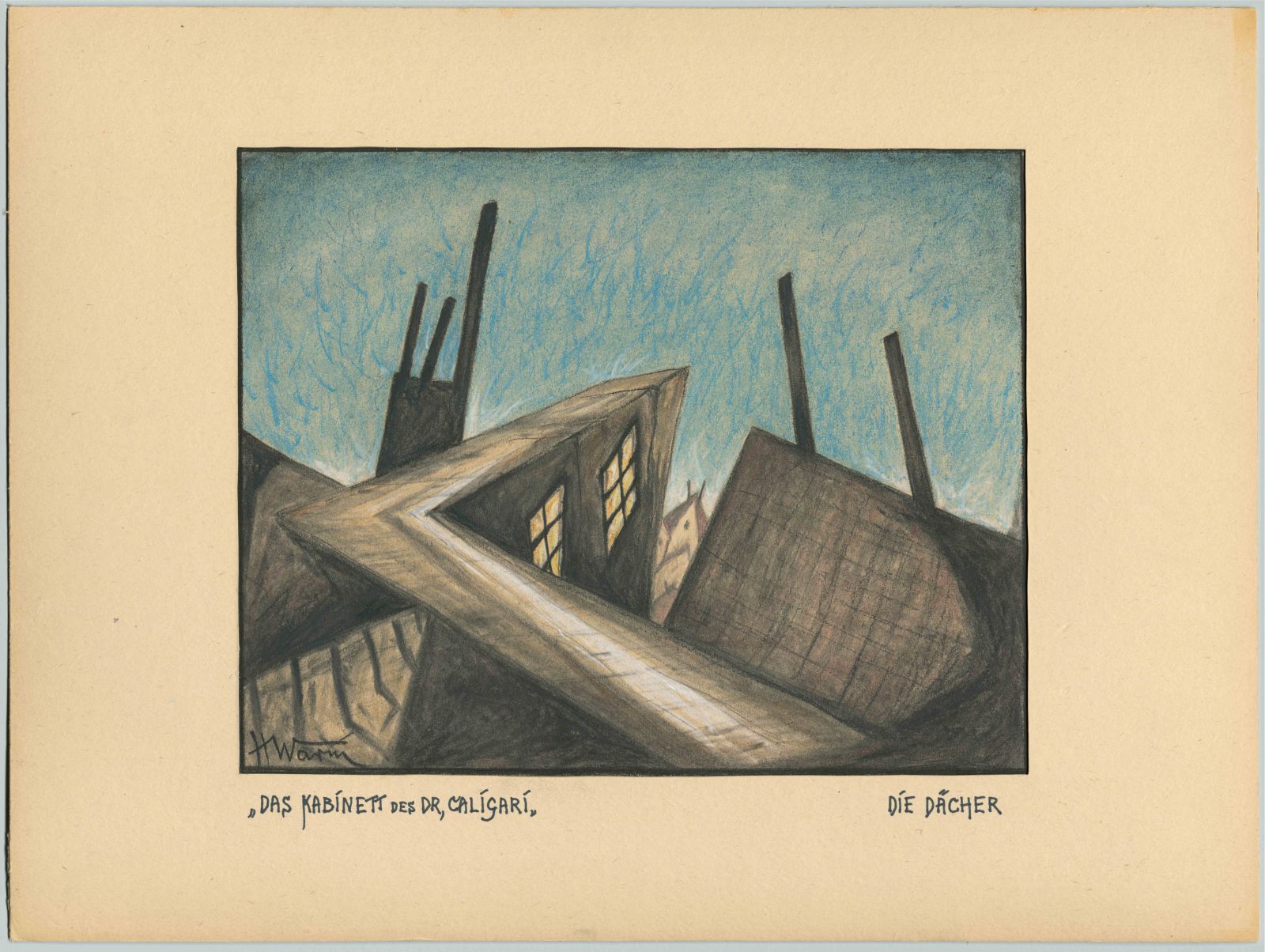
Hermann Warm (1889‐1976) The roofs Schwarze Kreide, Farbstifte und Kreide auf gelblichem Papier Sammlung/Collection: Deutsche Kinemathek – Hermann Warm Archiv
Like architecture, film too is about the effect of space: the viewer in the cinema experiences space in the film similarly to that of a building, with all the senses and on a cognitive level. By reducing, enlarging or changing the perspective, different effects can be achieved which influence the plot of the film and its emotional impact on the viewer. The exhibited drawings present various possibilities of changing space: curtains, light and shadow, but also stairs and bridges that can connect or disconnect spaces.
Line also plays a major role: oblique, broken or zigzagging lines have different effects on the viewer from straight lines, as Rudolf Kurtz noted in his Expressionismus und Film (1926). Many films of this period are classified as Expressionist, which in the cases of Robert Wiene’s The Cabinet of Dr Caligari (1920) and Paul Wegener’s The Golem: How He Came into the World (1920) is partly owing to the Expressionist film sets.
The masterly realised set designs were first created on paper: the Museum of Architectural Drawing is now showing designs by Emil Hasler, Robert Herlth, Otto Hunte, Erich Kettelhut, Hans Poelzig, Franz Schroedter and Hermann Warm for The Cabinet of Dr Caligari, The Golem: How He Came into the World, Metropolis, The Nibelungs, The Blue Angel and other masterpieces of the time. Source by Tchoban Foundation.
- Location: Museum of Architectural Drawing, Berlin, Germany
- Curator: Nadejda Bartels
- Exhibition duration: 13 June2019 – 29 September 2019
- Opening hours: Mon-Fri: 2 pm – 7 pm, Sat-Sun: 1 pm – 5 pm
- Photographs: German Film Architecture, Courtesy of Tchoban Foundation – Museum of Architectural Drawing

Hermann Warm (1889‐1976) The roofs Schwarze Kreide, Farbstifte und Kreide auf gelblichem Papier Sammlung/Collection: Deutsche Kinemathek – Hermann Warm Archiv 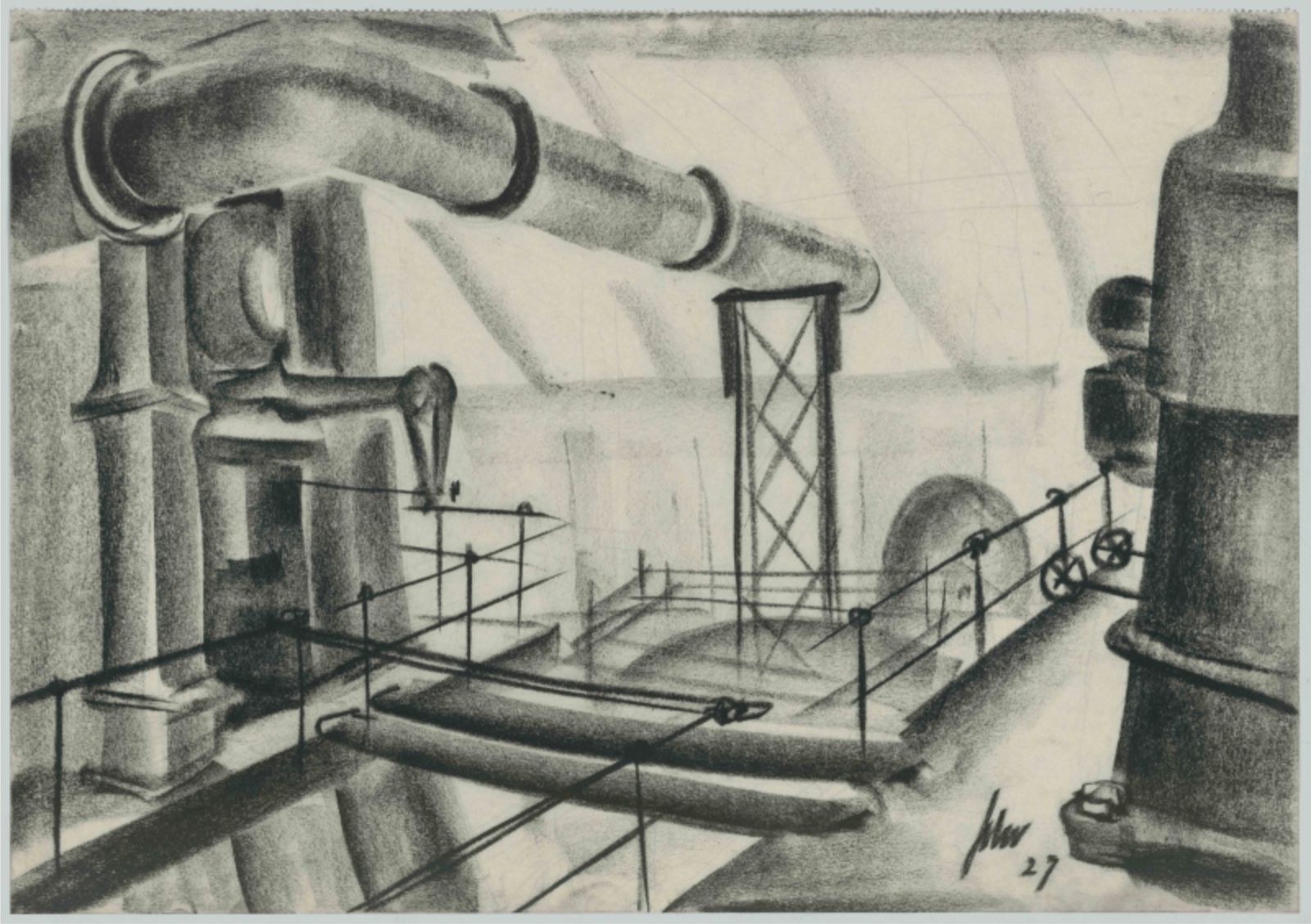
Franz Schroedter (1897 – 1968) Industrial landscape Sammlung/Collection: Deutsche Kinemathek – Franz Schroedter Archiv 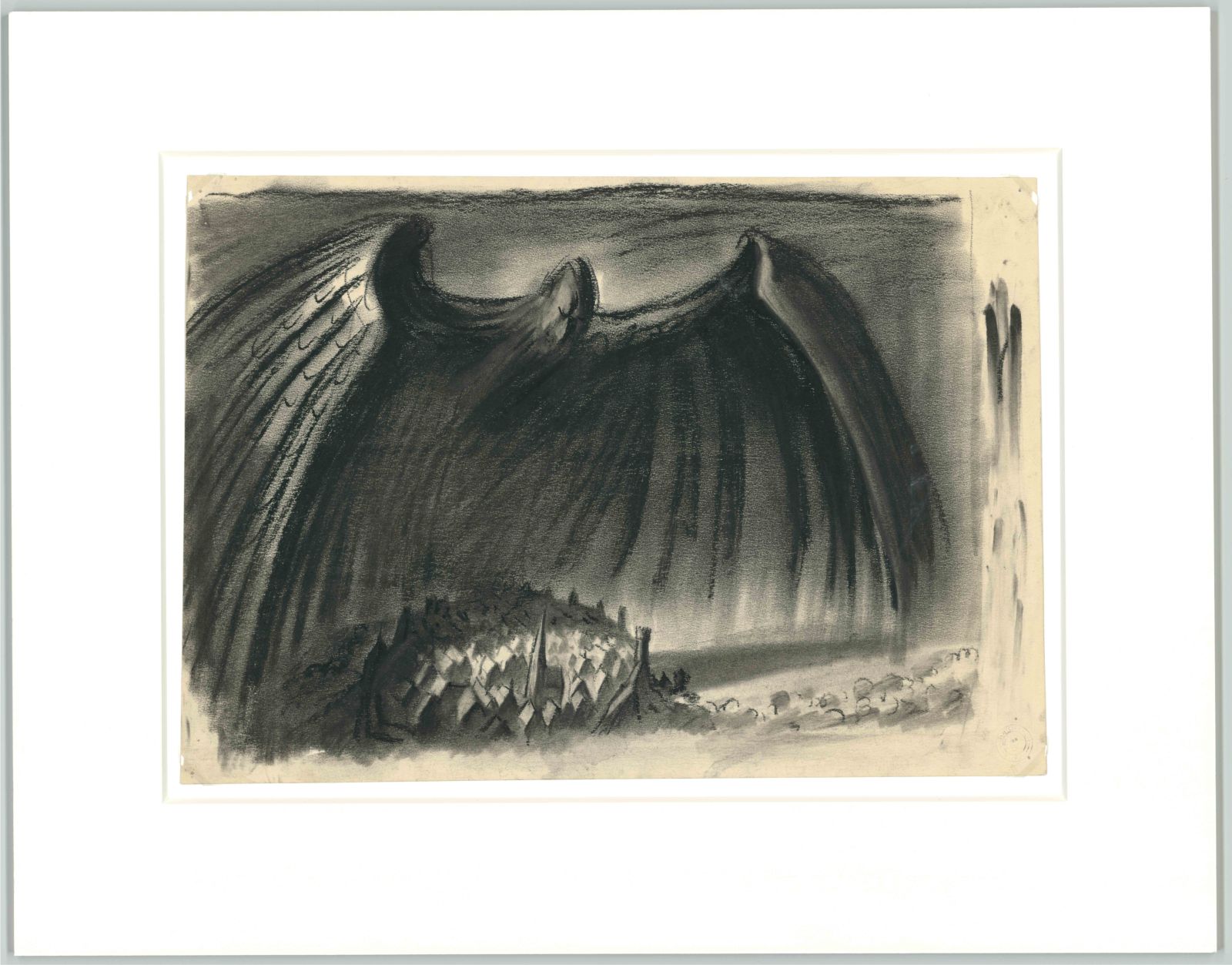
Robert Herlth (1893‐1962) Mephisto as a demon over the town Sammlung/Collection: Deutsche Kinemathek – Robert Herlth Archiv 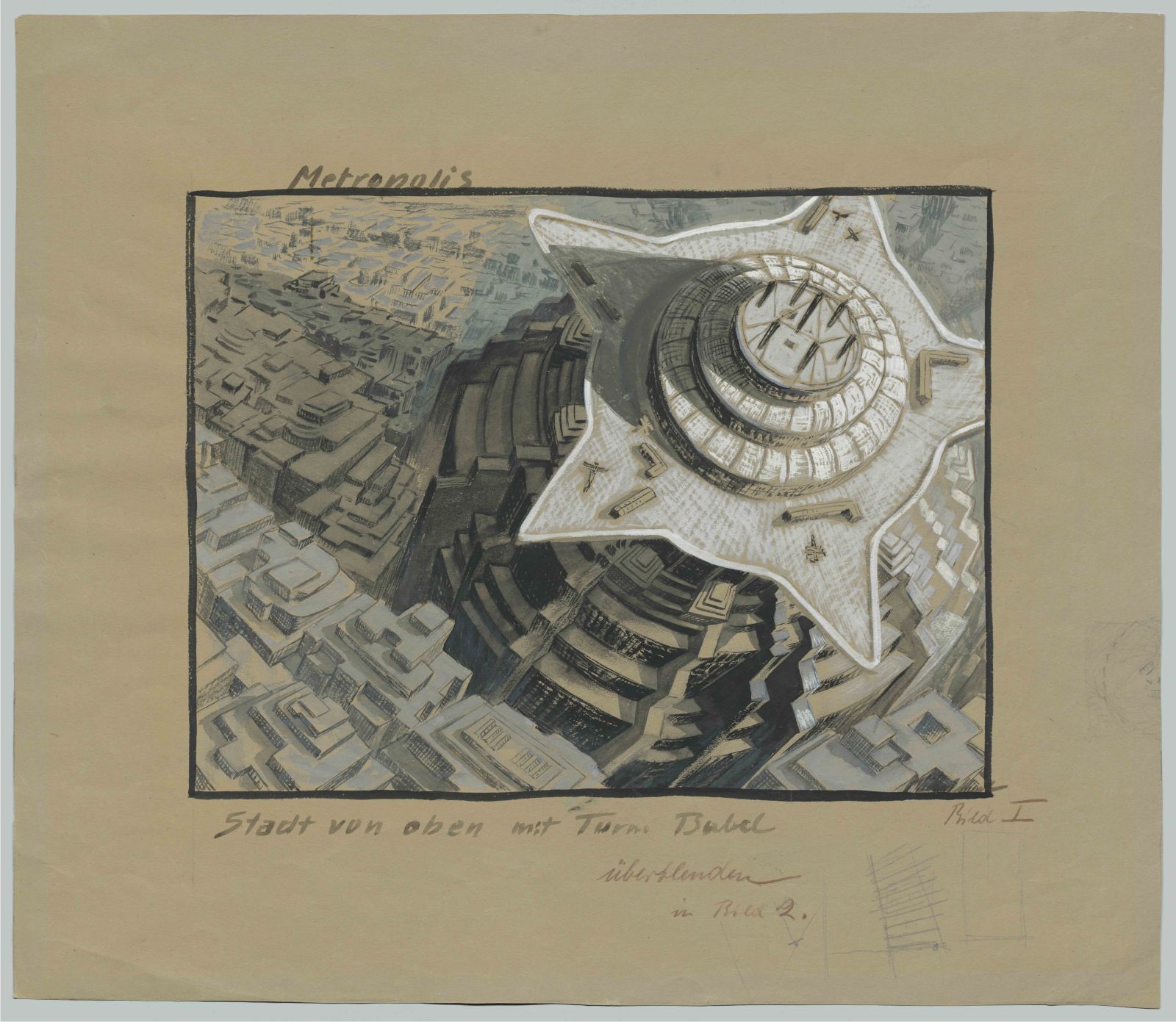
Erich Kettelhut (1893 – 1979) View of the city from above with Babel tower Sammlung/Collection: Deutsche Kinemathek – Erich Kettelhut Archiv 
Erich Kettelhut (1893 – 1979) City of the Sons Sammlung/Collection: Deutsche Kinemathek – Erich Kettelhut Archiv 
Erich Kettelhut (1893 – 1979) Siegfried in front of Brunhilde’s castle Sammlung/Collection: Deutsche Kinemathek – Erich Kettelhut Archiv 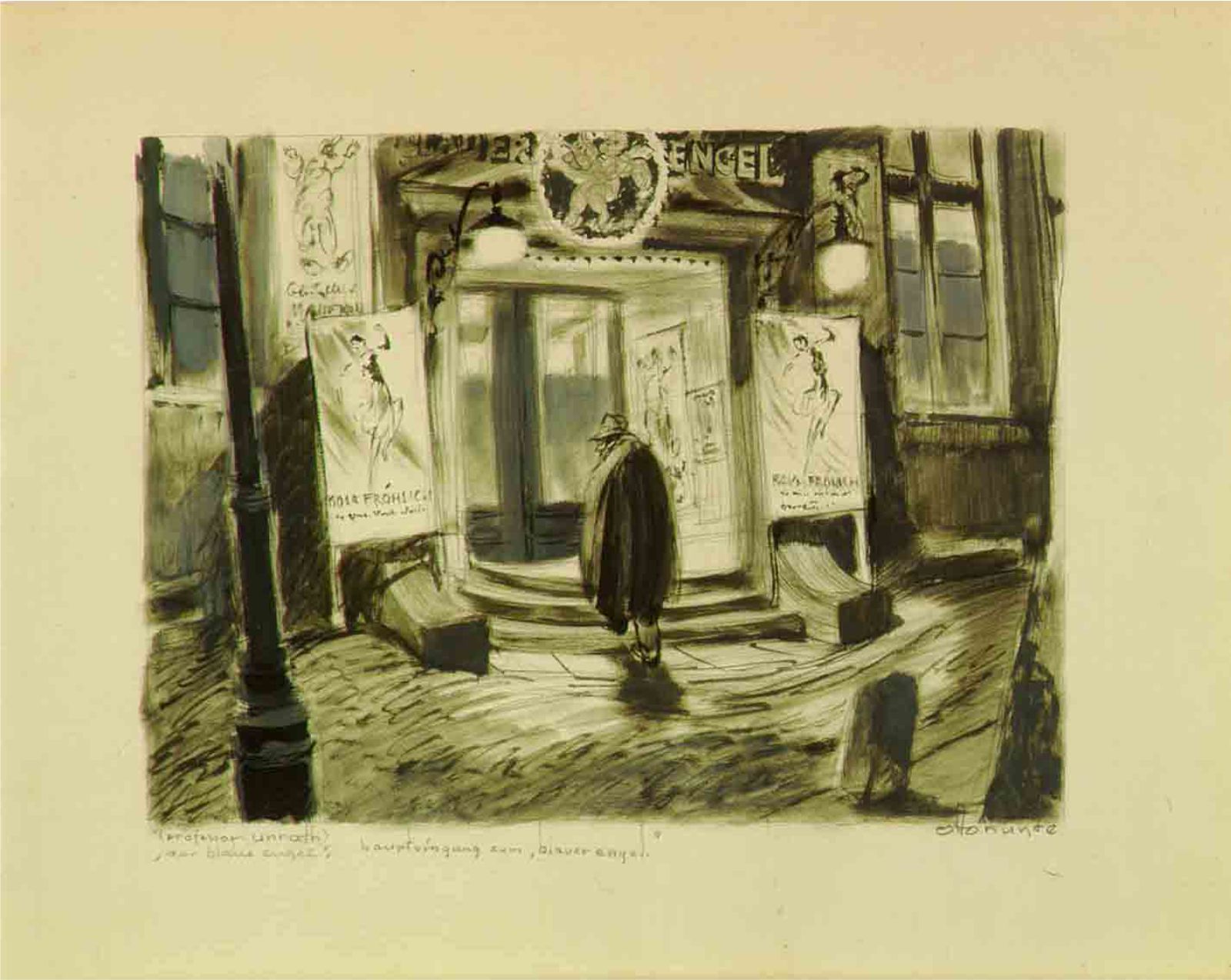
Otto Hunte (1881 – 1960) Main entrance of the „Blue Angel“ Deutsches Filminstitut & Filmmuseum, Frankfurt am Main / Sammlung Otto Hunte 
Otto Hunte (1881 – 1960) Worms Castle Deutsches Filminstitut & Filmmuseum, Frankfurt am Main / Sammlung Otto Hunte

